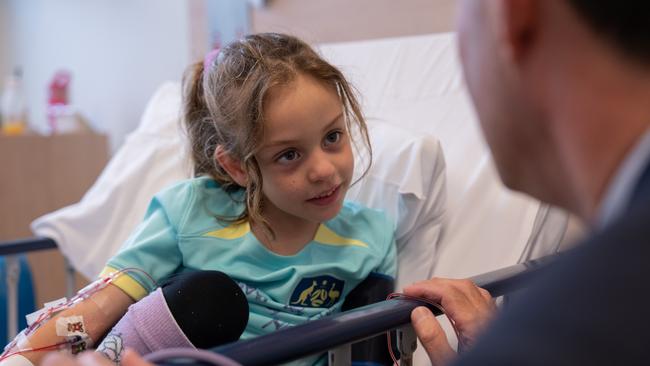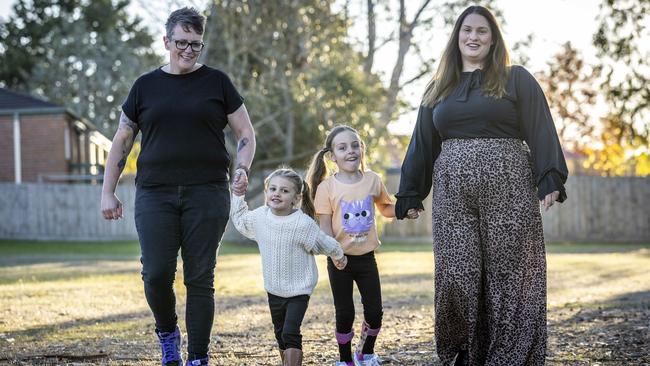‘Already improving’: First Aussie child receives top cerebral palsy treatment
Aussie families are spending thousands on this overseas treatment for their children. But now it’s been offered locally for the first time.
Conditions
Don't miss out on the headlines from Conditions. Followed categories will be added to My News.
A Melbourne six-year-old with cerebral palsy has become the first child to receive a world-leading treatment at an Australian hospital.
Aussie families spend tens of thousands of dollars to travel overseas for cord-blood treatments, but Zara, 6, underwent the procedure at the Monash Children’s Hospital in April.
She is the first child to receive an infusion at an Australian hospital of her own umbilical cord blood – frozen at birth – to treat cerebral palsy.
The success of Zara’s procedure – which prompted her team to cancel a booking for a different therapy because she no longer needed it – has renewed experts’ calls for the government to invest in local trials for a wider rollout.
Monash Children’s Hospital pediatric neurology head Professor Michael Fahey said they believed the cord blood’s anti-inflammatory components and stem cells “allowed the brain to heal itself”.
“Based on the studies, we are expecting that there will be a level of improvement in the way that Zara walks, the way that she communicates and the way she interacts with others.
“People who have been to overseas centres tell us … their children aren’t as tired so they learn better. It’s great and really promising to be able to do this in Australia.”

Children with mild CP were the best candidates and the stem cells helped the brain heal – not regenerate, he said.
“They don’t become new nerve cells in place of what’s been damaged,” he said.
Zara’s parents worked alongside Professor Fahey and the hospital, the Cerebral Palsy Alliance, Cellcare, Melbourne’s Hudson Institute of Medical Research and several local politicians for more than a year to secure treatment.
Zara underwent the 30-minute procedure – similar to a standard blood transfusion – at the hospital after the medicine’s regulator granted her compassionate access.
Zara’s mother Michelle Forrest said her football-loving daughter, who was born premature and diagnosed with cerebral palsy after she began missing milestones, would “give anything a go”.
“If other kids are doing it, she wants to do it to,” she said.
After the diagnosis, she wondered whether Zara’s cord blood – frozen in the first place because of Ms Forrest’s type 1 diabetes diagnosis – could help her daughter.
They were considering heading overseas until they got the local approval, and fought so hard to, in part, pave the way for other Australian families.
“The stars really aligned for us,” she said.

While the biggest gains were expected after three to six months, Zara was already improving, and had better balance, less muscle stiffness and easier movement, she said.
“At soccer training, she can weave between the cones easier,” she said.
“At physio the other day, for the first time in her life, she walked up and down four steps without having to hold on to the rail.”
Cerebral Palsy Alliance senior research fellow Dr Megan Finch-Edmondson said a sibling or donor’s cord blood could also be used, and they would love to see a large-scale trial in Australia.
“(This) which may enable cord blood to become approved as a treatment for cerebral palsy in Australia,” she said.
She said Zara’s pathway was “suitable” for some but highly reliant on advocacy from individual doctors and hospitals.
“We want to see more children, like Zara, have the opportunity to be treated with cord blood in Australia and not need to rely on overseas treatment options,” she said.
“It has quite a long history of clinical trials and generation of research evidence to support this treatment,” she said.
More Coverage
Originally published as ‘Already improving’: First Aussie child receives top cerebral palsy treatment




